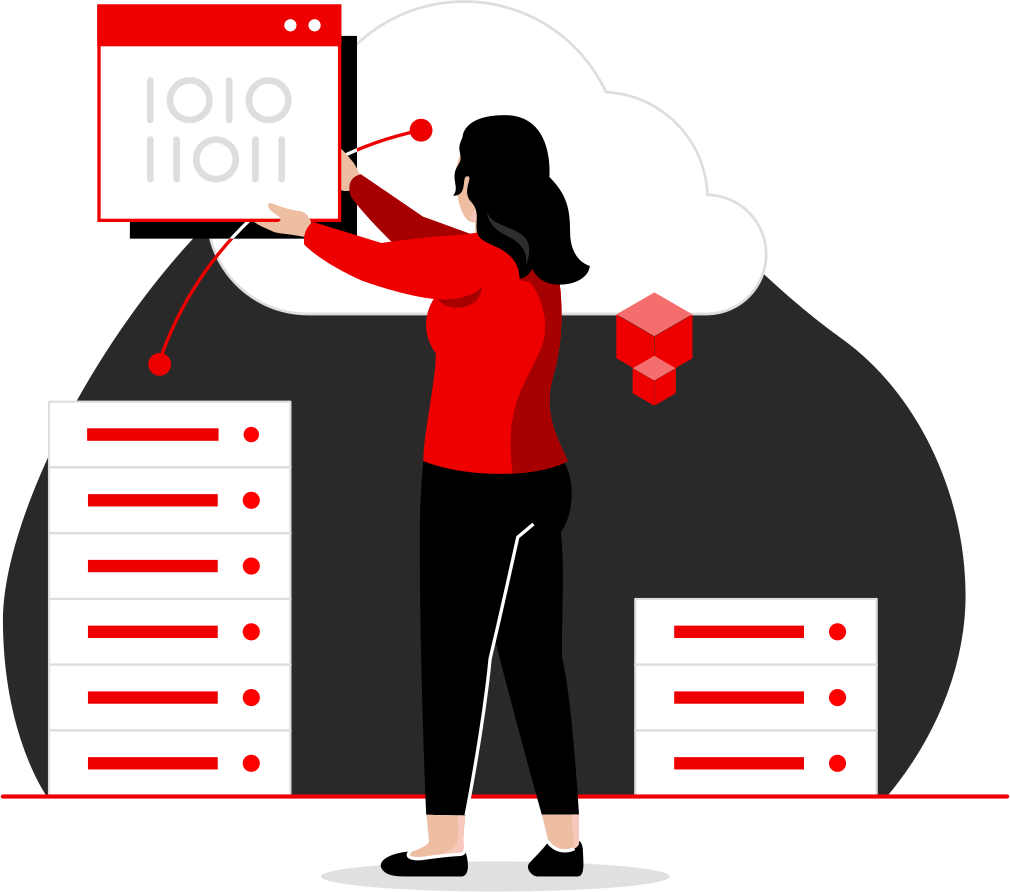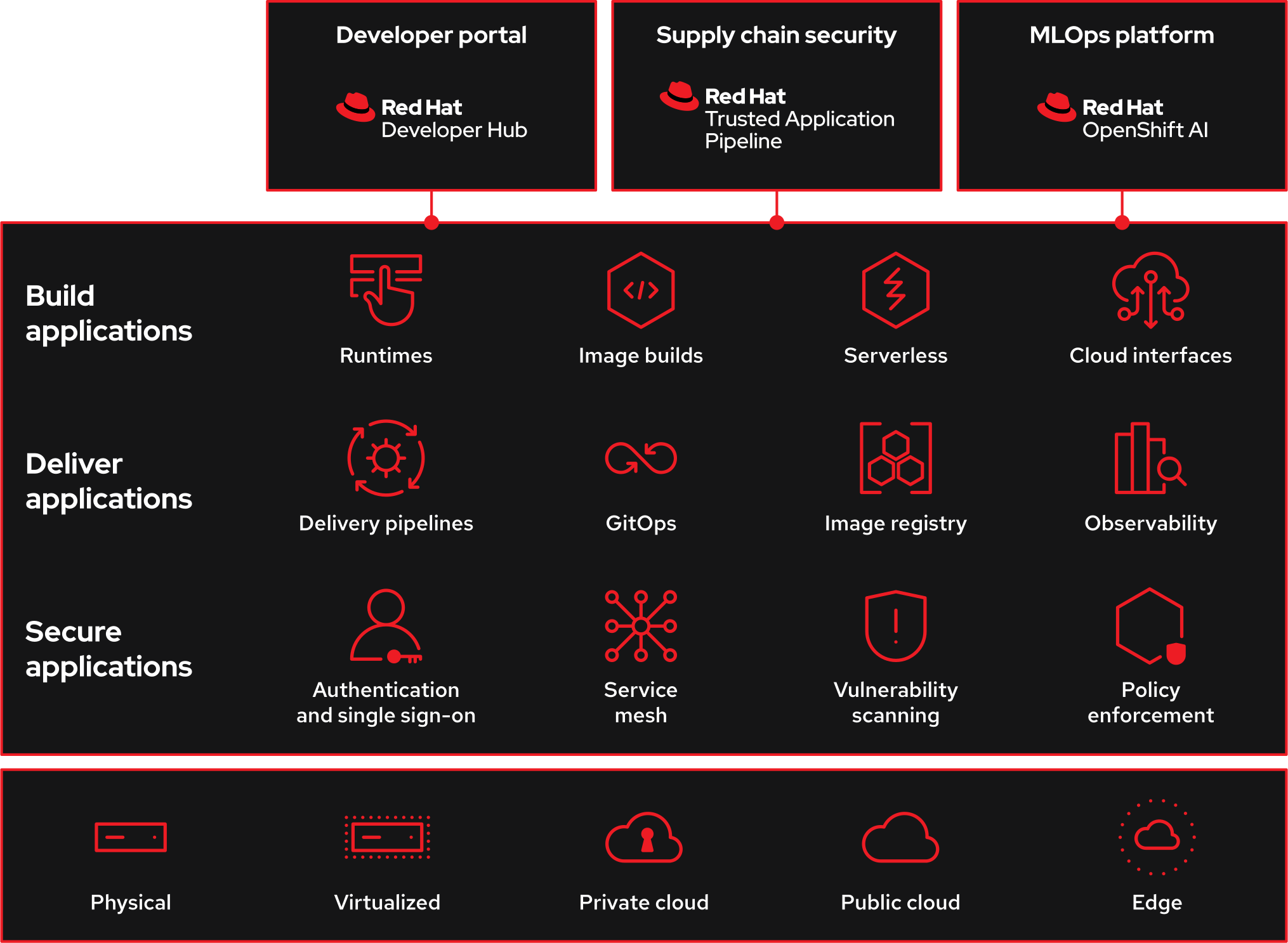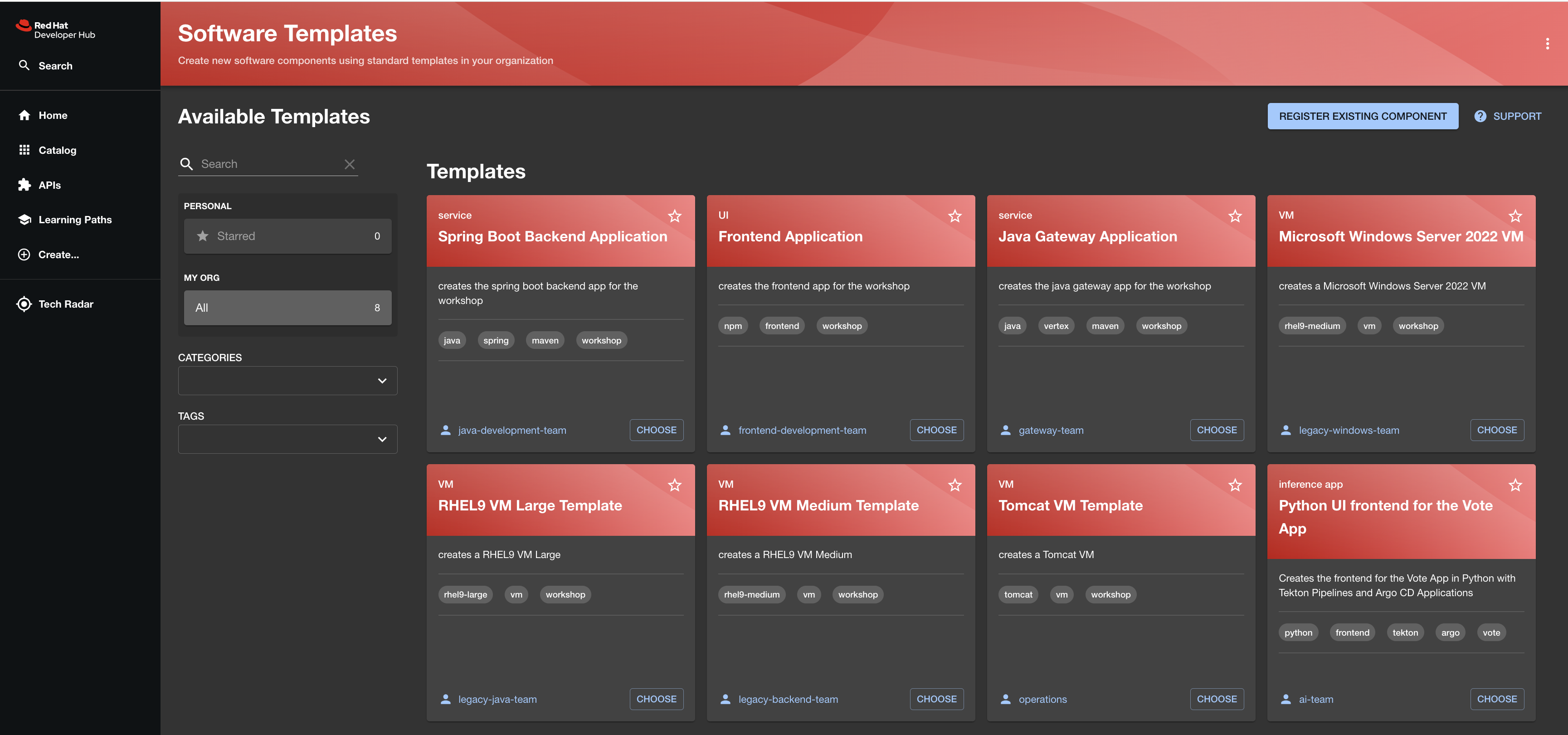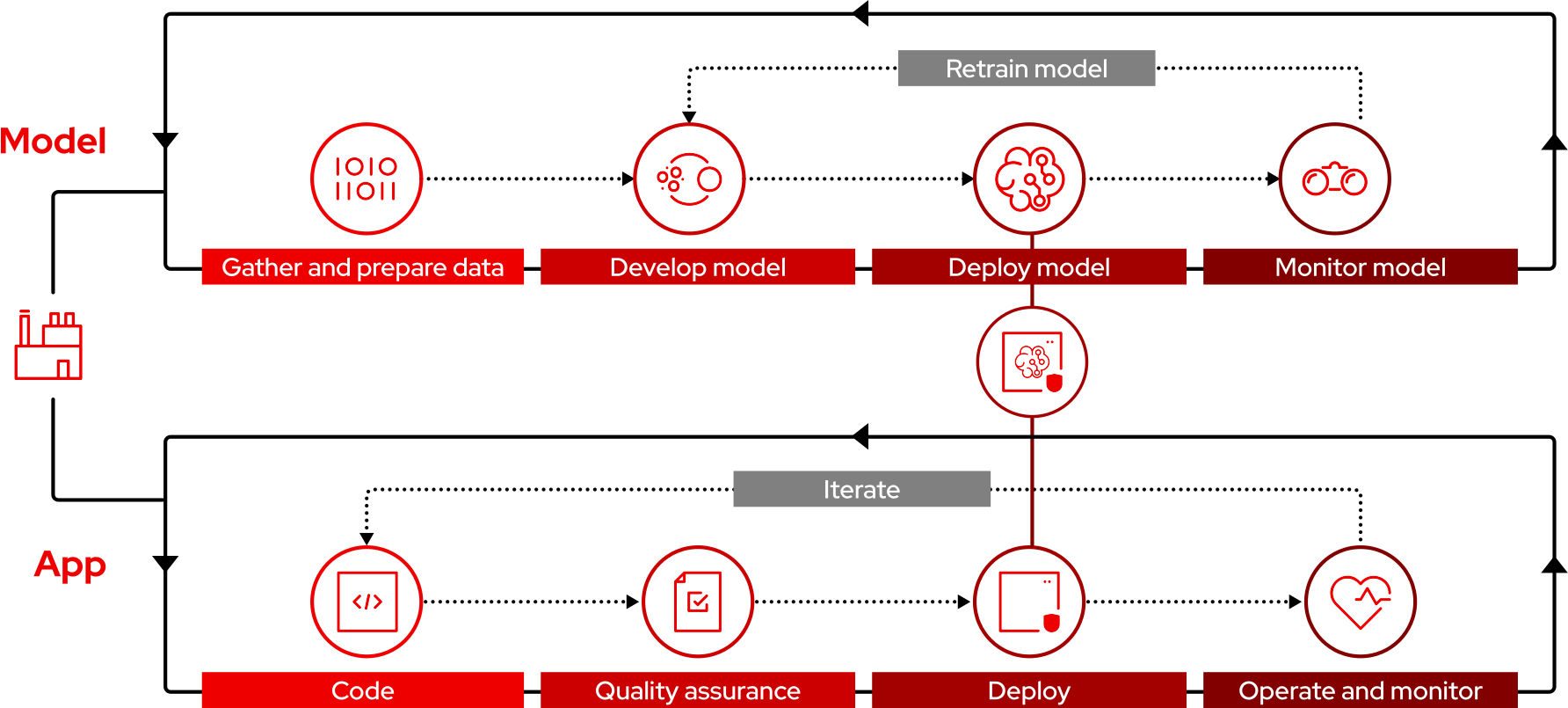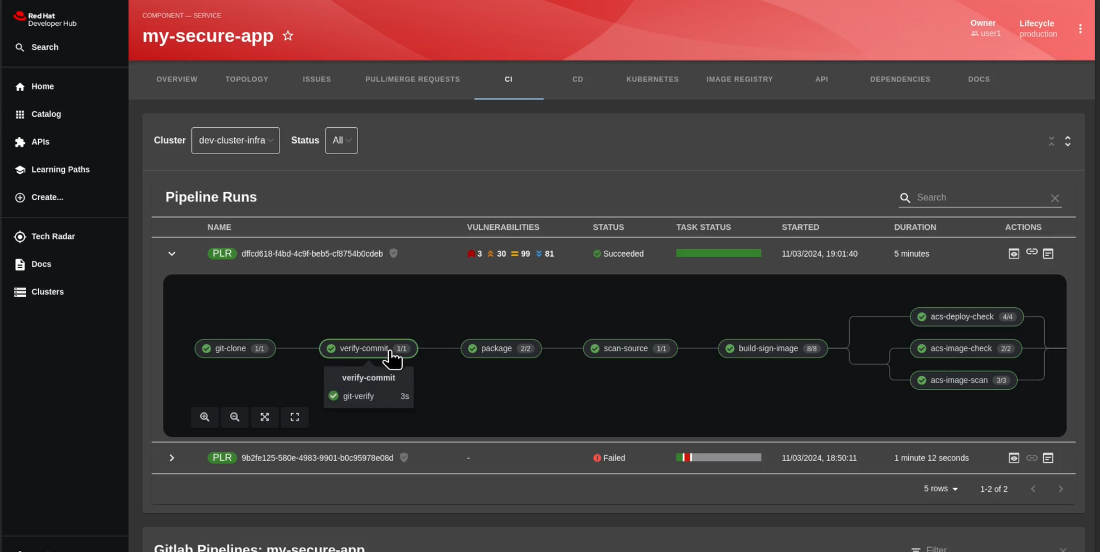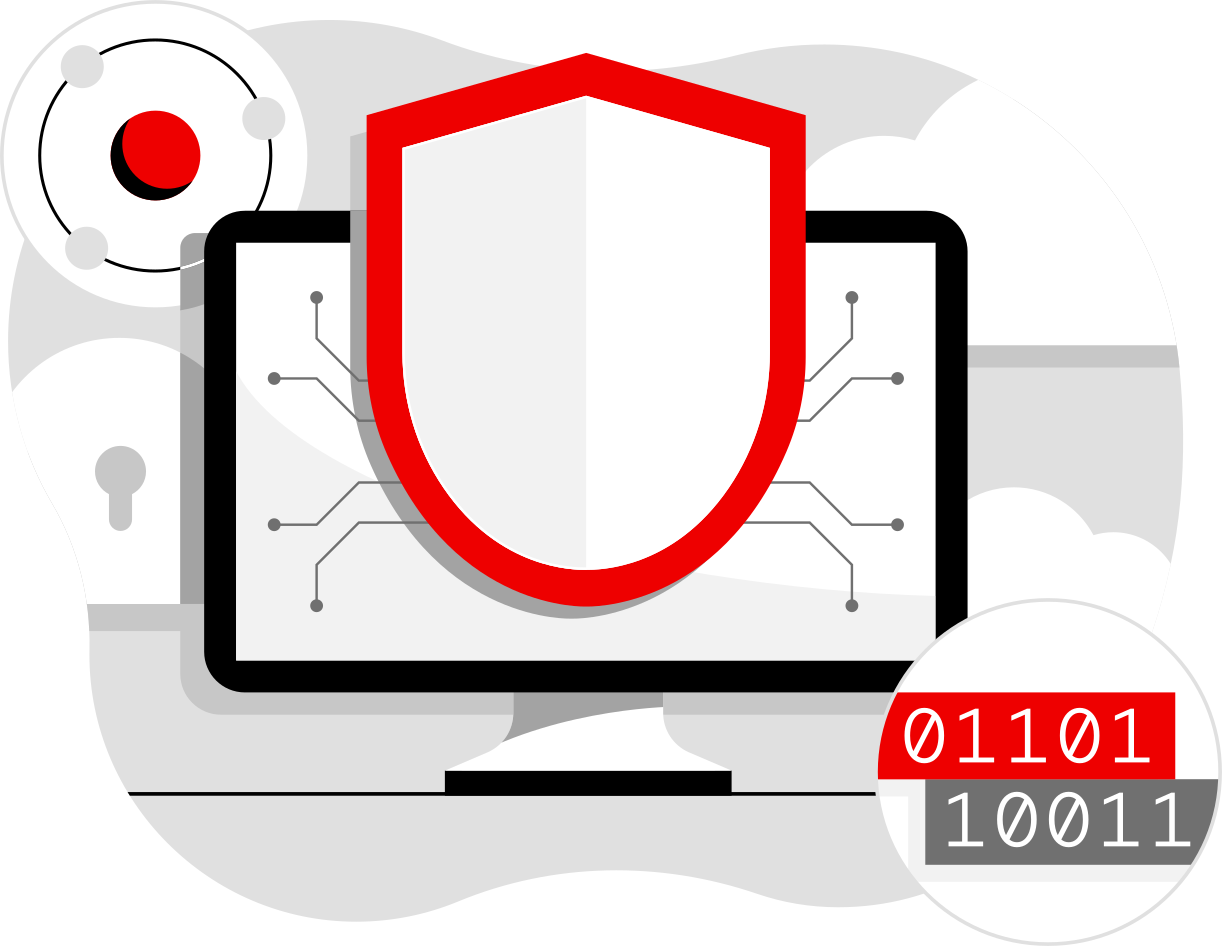5 ways developers benefit from Red Hat OpenShift
Introduction
Across industries, developers solve some of the toughest business challenges with innovative applications.
Through user-friendly features and interfaces, development teams deliver original software solutions that help organizations increase customer engagement, generate revenue, and remain competitive in changing markets. By integrating emerging technologies like artificial intelligence (AI), machine learning (ML), and Internet of Things (IoT) devices into applications and services, developers create solutions that meet evolving consumer demands in less time. As organizations continue to offer new, innovative digital services, developers become increasingly important in promoting growth and sustained business success.
Even so, inefficient infrastructure management and deployment workflows can slow development processes and make it difficult for teams to adopt the latest tools and technologies. As integrated technology stacks, application platforms include features and capabilities—as well as integrations with larger technology ecosystems—that simplify development across hybrid cloud environments. Delivered as either cloud services or self-managed installations, application platforms can help you build and modernize applications using advanced architectures and technologies.
Based on open standards, Red Hat delivers an open hybrid cloud application platform that helps you rapidly develop and deliver both traditional and cloud-native applications. Red Hat® OpenShift® is a trusted, comprehensive, and consistent platform to develop, modernize, and deploy applications at scale, including today’s AI-enabled applications. It brings together a comprehensive set of tools and services that streamline the entire application lifecycle, from development to delivery to management of application workloads. Developers can innovate faster with a complete set of services for bringing applications to market on your choice of infrastructure.
This e-book reviews 5 key benefits of Red Hat OpenShift for developers.
Innovate on a trusted, comprehensive, consistent application platform
Built on the trusted foundation of Red Hat Enterprise Linux®, Red Hat OpenShift provides a unified, security-focused platform that streamlines modern application development across hybrid cloud environments—including on-site infrastructure, public cloud resources, and edge devices. With tools and services that automate many tedious, time-consuming tasks, Red Hat OpenShift simplifies application modernization and deployment, helping boost productivity and operational efficiency across teams. Additionally, integrations with the Red Hat Application Foundations portfolio and a broad partner ecosystem let you use your choice of technologies to build, modernize, and deliver a variety of applications through a single, consistent development experience. Plus, Red Hat Openshift is available as a self-managed product or as a cloud service from Amazon Web Services (AWS), Microsoft Azure, Google Cloud, and IBM Cloud.
Trusted
Red Hat OpenShift offers a trusted version of Kubernetes based on years of engineering and support across environments. Secure-by-default settings help mitigate Kubernetes-related vulnerabilities, while integration with Red Hat Advanced Cluster Security for Kubernetes lets teams build security into all stages of application development and deployment. Red Hat also offers trusted content for building container images that you can run on Red Hat OpenShift. You can also add prevalidated capabilities and services to the platform through our extensive software partner ecosystem for Red Hat OpenShift.
Comprehensive
Red Hat OpenShift is a comprehensive application platform that helps streamline securityfocused, scalable development across varied environments. It can help your teams address modernization and deployment challenges and boost developer productivity and operational efficiency via extensive tooling and services.
Consistent
Red Hat OpenShift gives you a single, consistent developer experience with the freedom to rapidly build and deploy applications using your preferred tools. By developing on Red Hat OpenShift, you can build and automate workflows once, and then run applications across environments, including on-site infrastructure, public clouds, edge locations, and hybrid environments.
As a leading hybrid cloud application platform, Red Hat OpenShift gives developers the tools, pipelines, frameworks, and services needed to build and deliver applications with a focus on security.
Here are 5 key benefits of Red Hat OpenShift for developers.
1: Speed application development and boost productivity
For many organizations, rapidly delivering innovative new application features and critical updates is key to increasing customer satisfaction and gaining competitive advantages. By minimizing the time spent on infrastructure setup and application deployment and ensuring ready access to tools and hybrid cloud resources, you can simplify and speed application lifecycles and respond to changing user demands without delay.
Red Hat OpenShift includes a comprehensive set of tools and capabilities that let you develop innovative, scalable, cloud-native applications using modern architectures like microservices, serverless, and event-driven—in less time and with less infrastructure overhead.
Red Hat OpenShift Dev Spaces
A cloud development environment (CDE) service for Red Hat OpenShift, Red Hat OpenShift Dev Spaces promotes consistent development practices through security-focused, zero-configuration environments and self-service provisioning capabilities. With support for popular integrated development environments (IDEs) and a command line interface (CLI), OpenShift Dev Spaces forms a convenient, familiar, reliable foundation for developing modern applications. It offers customizable developer workspaces defined as code using Devfile, an open standard for defining containerized development environments that provides consistency and reduces compatibility issues across developer systems.
Podman Desktop
Gain flexibility and accelerate development with Podman Desktop, a free graphical interface that lets you manage containers and Kubernetes in a local environment. Simplify AI development with Podman AI Lab, a Red Hat extension that provides key open source technologies for building with AI in a local environment.
Red Hat Developer Hub
Red Hat Developer Hub is an enterprise-ready internal developer portal that streamlines processes, so you can concentrate on developing innovative solutions. Templates speed new software development—including websites and applications—with the ability to load code skeletons, insert variables, and publish to repositories like GitHub or GitLab. Prearchitected, supported approaches abstract underlying technology details, letting you focus on the critical features of your application. Curated, certified plugins for popular technologies—like Tekton, ArgoCD, and Keycloak—integrate directly with Red Hat Developer Hub to simplify tool configuration and maintenance across your organization.
Red Hat OpenShift operators
Red Hat OpenShift operators let you add and manage certified third-party technologies from the Red Hat Ecosystem Catalog—including databases and observability tools—directly in the Red Hat OpenShift console.
Red Hat Application Foundations
Access Red Hat Application Foundations—a unified set of application runtimes and frameworks and application programming interface (API) management, data streaming, and event-driven services—directly in Red Hat OpenShift. These tools and services let you develop and deploy many kinds of applications on a single, comprehensive platform. Application Foundations also includes popular development languages and frameworks like Quarkus that you can build into Red Hat OpenShift.
2: Modernize your traditional applications with new architectures
Application modernization projects deliver increased efficiency, agility, and competitiveness for many organizations. By transitioning from traditional monolithic application architectures to more modular, scalable, and cloud-native solutions, you can optimize operations and enhance user experiences. However, these projects also often present development challenges, including complex existing systems, lack of complete tool sets, and comprehensive training requirements.
Red Hat offers several tools to help you plan your modernization journey and migrate your traditional, virtualized, and cloud-native applications to Red Hat OpenShift.
- Migration toolkit for applications (MTA) is a set of tools—based on years of experience—that supports large-scale application modernization and migration projects. Simplify and speed initiatives with advanced application assessment, source-code analysis, and project management capabilities—all through a central management interface. Gain a flexible, comprehensive view of your application portfolio to evaluate its current state. Find high-impact modernization opportunities and build scalable plans using application archetypes to automatically group applications based on your defined criteria. Bulk assessment and automated analysis capabilities give you both high-level and low-level insights to tailor your modernization strategy.
- Migration toolkit for containers (MTC) helps you move stateful and stateless applications from a variety of Kubernetes platforms to Red Hat OpenShift 4 clusters. Migrate applications—within the same Red Hat OpenShift cluster or between clusters—and minimize downtime using a comprehensive web console and API based on Kubernetes custom resources.
- Migration toolkit for virtualization (MTV) lets you migrate virtual machines from VMware vSphere to Red Hat OpenShift Virtualization, allowing you to run and manage virtual machine workloads alongside container workloads.
- Red Hat OpenShift Virtualization lets you deploy and manage both virtual machines and containers on a single platform, so you can make the most of your existing virtualization investments. Increase consistency across your applications with a uniform, preferred tool set that extends new technologies and approaches—like continuous integration/continuous deployment (CI/CD) and GitOps workflows—to your traditional workloads.
15 reasons to adopt OpenShift Virtualization
Learn how you can get the most from your existing virtualization investments while taking advantage of cloud-native architectures, streamlined operations, and new development approaches.
Read the e-book or check out OpenShift Virtualization developer resources.
- Red Hat Developer Hub lets you build virtual machines using a streamlined development process that reduces complexity. These virtual machines can be migrated to OpenShift Virtualization, allowing you to deploy multiple application architectures on a single platform.
- Red Hat OpenShift Serverless allows you to create scalable, event-driven, cloud-native serverless applications on Red Hat OpenShift. It simplifies the process of building, deploying, and managing serverless workloads, so you can focus on writing code without the overhead of infrastructure management. Features like serverless functions, autoscaling to zero, progressive rollouts, and event integrations make OpenShift Serverless a versatile choice for modern cloud-native applications.
- Red Hat OpenShift Service Mesh provides a consistent way to connect, manage, and observe microservices-based applications from on-site datacenters to public clouds and edge installations. Gain visibility into traffic flow and dependencies between services to identify issues across your hybrid cloud environment.
- Red Hat OpenShift at the edge gives you the freedom to use the same application platform from datacenter to cloud to edge locations. You can deploy closer to where data is collected to reduce latency and bandwidth while improving efficiency. Edge computing can help you gain faster insights and support remote applications and disconnected locations, while continuing to meet regulatory requirements. Use data and analytics on-site to speed decision making. Deliver latency-sensitive applications to users in remote locations. Ensure continuity of critical operations even in environments with limited connectivity. And process and manage sensitive data on-site to maintain compliance with data sovereignty requirements.
Tip: Learn how to use OpenShift Serverless in a hands-on lab.
3: Develop and deploy AI solutions in less time
AI/ML technologies can help development teams create innovative applications in rapidly changing markets. The right toolset—based on open source projects and commercial solutions—can simplify development of intelligent applications and help you deliver AI solutions in less time. And by staying current with new tools and technologies, you can create more effective solutions that take advantage of the latest features, optimization techniques, and algorithms.
Red Hat OpenShift AI builds on Red Hat OpenShift to provide a single, enterprise-ready application platform for performing AI experiments, serving advanced models, and delivering intelligent applications in less time. Data scientists, engineers, and developers can collaborate on a unified, scalable, security-focused platform that meets workload and performance demands across on-site and public cloud infrastructure. Boost confidence with tested, supported tools, simplify infrastructure management, and deploy applications across hybrid cloud environments.
By expanding DevOps practice to incorporate machine learning operations (MLOps), OpenShift AI supports complete AI/ML lifecycles, from building and training to deploying and monitoring AI models and applications. Combine data science pipelines for training models with GitOps pipelines for deploying models and connecting to applications. Scale your operations to support compute-intensive workloads like foundation and generative AI (gen AI) models.
OpenShift AI includes a core set of development features—like AI/ML libraries and frameworks, ML pipelines, and support for multiple IDEs—for data scientists to build predictive AI models. It also includes InstructLab, distributed training capabilities, and hardware acceleration support for fine tuning and augmenting large language models (LLMs) for specific use cases.
4: Follow a fast path to production
Rapid, efficient application development and deployment are key to delivering innovative solutions that meet evolving user demands and industry trends. Automated processes let you introduce new features or updates in less time and significantly reduce time to market. Streamlined deployment allows you to iterate more efficiently and refine your applications based on real-time feedback. Dynamic, automated application workflows enhance collaboration within and between development and IT operations teams.
Red Hat OpenShift includes integrated developer tools and workflows to help you define and implement consistent, security-focused software development processes that speed application delivery. For example, you can take advantage of plugins, extensions, and software development kits (SDKs) to build applications. CI/CD pipelines and GitOps tools let you build, test, and deploy code using automated workflows. Monitoring and logging services let you track application performance and identify issues. And a container registry lets you efficiently store and manage container images.
- Red Hat OpenShift builds let you use a single Kubernetes API to assemble source code and binaries into a container image while abstracting the underlying tools and details typically required to build images.
- Red Hat OpenShift Pipelines lets you create advanced, security-focused CI/CD workflows that incorporate your preferred source code repository. By running each step in a separate container, these workflows can automatically scale to meet demand.
- Red Hat OpenShift GitOps allows you to integrate Git repositories into your pipelines, so you can define infrastructure and workload configurations using declarative code for efficient, reliable application delivery. It also helps you create repeatable, continuous delivery processes that use a single source of truth to build and deploy applications across clusters, at scale.
- The Red Hat OpenShift web console lets you manage your applications from a single location. Import existing codebases, images, and dockerfiles to directly build and deploy applications on Red Hat OpenShift. Analyze processor, memory, and storage consumption to understand application performance. And access application status, logs, and events to see application state and troubleshoot issues.
5: Build applications using a trusted software supply chain
Protecting applications in hybrid cloud environments while rapidly delivering digital services that meet user demand and business requirements can be challenging for development teams. For many organizations, integrating security features that ensure data privacy, control access, and meet compliance requirements is now a critical part of modern software development. Adopting comprehensive security strategies, employing advanced technologies, and adhering to evolving compliance standards can help you increase application integrity and build confidence with users and stakeholders.
Using continuous compliance and security checks throughout application lifecycles, Red Hat OpenShift delivers a modern, scalable approach to protecting entire application stacks. As the operating system foundation, Red Hat Enterprise Linux includes security features like Linux namespaces, Security-Enhanced Linux (SELinux), CGroups, and Secure Computing Mode (seccomp) to isolate and protect workloads. An integrated container registry lets you scan for vulnerabilities and cryptographically sign applications for trusted identification. Strong encryption controls help safeguard sensitive application data. And secure operational capabilities—including authentication, authorization, and secret management—ensure trust between users and applications.
Red Hat OpenShift integrates with Red Hat Trusted Software Supply Chain to help you build security into the components, processes, and practices in your software factory from the start. You can consistently code, build, deploy, and monitor applications across environments, using automated security guardrails in your software development workflows. Trusted Software Supply Chain incorporates several products, each of which works with Red Hat OpenShift to help you increase security throughout the software development lifecycle.
Red Hat Trusted Profile Analyzer
Red Hat Trusted Profile Analyzer scans and analyzes software components to map dependencies and evaluate the impact radius of security threats in the codebase. Generate and manage software bills of materials (SBOM) and vulnerability exploitability exchanges (VEX) from this system of record. Trusted Profile Analyzer also brings application security checks to local development environments—you can store, index, and query security documentation to access recommendations directly from your IDE. You can also run dependency analyses and identify and remediate vulnerabilities while coding, helping to avoid deploying applications that contain security vulnerabilities.
Red Hat Trusted Artifact Signer
Built on the open source Sigstore project, Red Hat Trusted Artifact Signer simplifies cryptographic signing and verification of software artifacts. Auditable transparency logs from an immutable ledger ensure code has not been tampered with and increase the trustworthiness of artifacts across the software supply chain. Trusted Artifact Signer supports short-lived keyless and key-based signing as well as simplified operator installation. It also includes Enterprise Contract, so you can automatically verify supply chain integrity, authenticate provenance, and enforce Supply-chain Levels for Software Artifacts (SLSA) levels based on policies in a scalable and declarative way.
Red Hat Trusted Application Pipeline
Red Hat Trusted Application Pipeline brings together Red Hat Developer Hub, Trusted Profile Analyzer, and Trusted Artifact Signer to customize and automate build pipelines, helping you adhere to signed attestations with detailed provenance. Deploy pipelines-as-code to a declarative state with release policies that block suspicious builds from production. Trusted Application Pipeline provides software templates with automated security checks and security-focused release workflows for deploying container images across environments. It automatically generates SBOMs for container images and provides provenance and attestations in line with SLSA standards. These templates help you standardize and speed the adoption of security measures across the software development lifecycle, with increased trust and transparency from the start.
Trusted Application Pipeline is modular in design, so you can use some or all of the components depending on your current needs. You can also configure your pipelines to use other artifact repositories and security systems, and layer them over application platforms like Red Hat OpenShift to integrate security into your entire software development lifecycle.
Red Hat Advanced Cluster Security for Kubernetes
Red Hat Advanced Cluster Security for Kubernetes continuously scans your environment against industry-standard deployment and runtime policies to protect your environment from malicious applications and misconfigurations. It integrates with DevOps and security tools and workflows to provide useful, context-rich guidelines that help you mitigate threats and apply security policies. The policy engine includes built-in controls to enforce DevOps and security-focused best practices based on industry standards—including Center for Internet Security (CIS) Benchmarks and National Institute of Standards Technology (NIST) guidelines. You can also automatically index and analyze images stored in Red Hat Quay registries with detailed access controls, giving you real-time reports about the latest Common Vulnerabilities and Exposures (CVEs) against vulnerability databases.
From code to production—with integrated security—in minutes
Discover how you can speed security-focused application development with Trusted Software Supply Chain:
- Read the e-book or learn more about Trusted Software Supply Chain.
- Explore Red Hat OpenShift Platform Plus, which combines Red Hat OpenShift with key technologies for building, modernizing, and deploying applications at scale.
Get started today
Red Hat OpenShift helps you rapidly build, deploy, run, and manage your applications across infrastructures, with security, and at scale. We offer developer sandboxes, trial programs, support services, and training courses to help you get started with less effort and in less time.
Access technical tools and expertise via Red Hat Developer
Join the Red Hat Developer program at no cost to benefit from technical tools and expertise, including access to product trials, learning resources, events, and the developer sandbox.
Start exploring in the developer sandbox
Get 30 days of instant, no-cost access to your own minimal, preconfigured OpenShift environment—hosted and managed by Red Hat—for development and testing.
Learn how to succeed with Red Hat Developer Hub
Read the Developer Portals: Prepare to Perform with Red Hat Developer Hub e-book to gain insights into developer portals and learn how to work with them to build an application.
